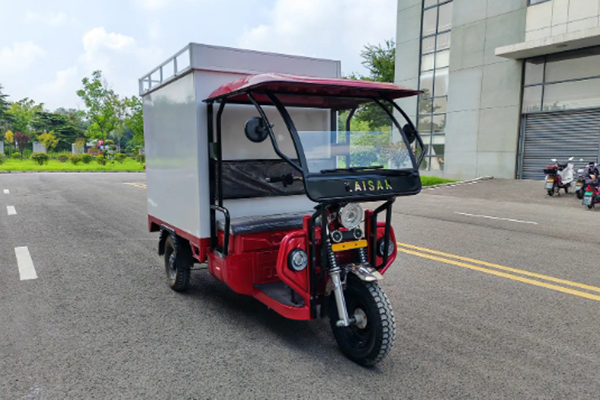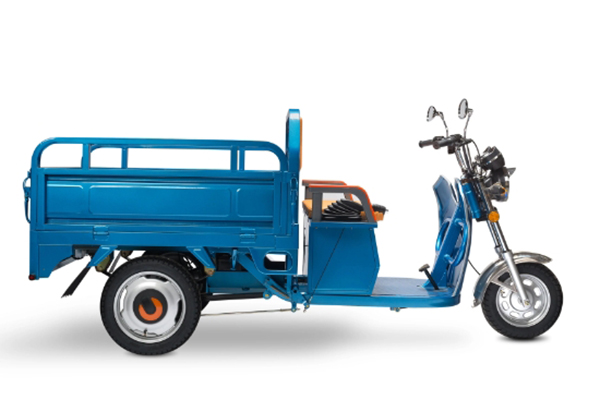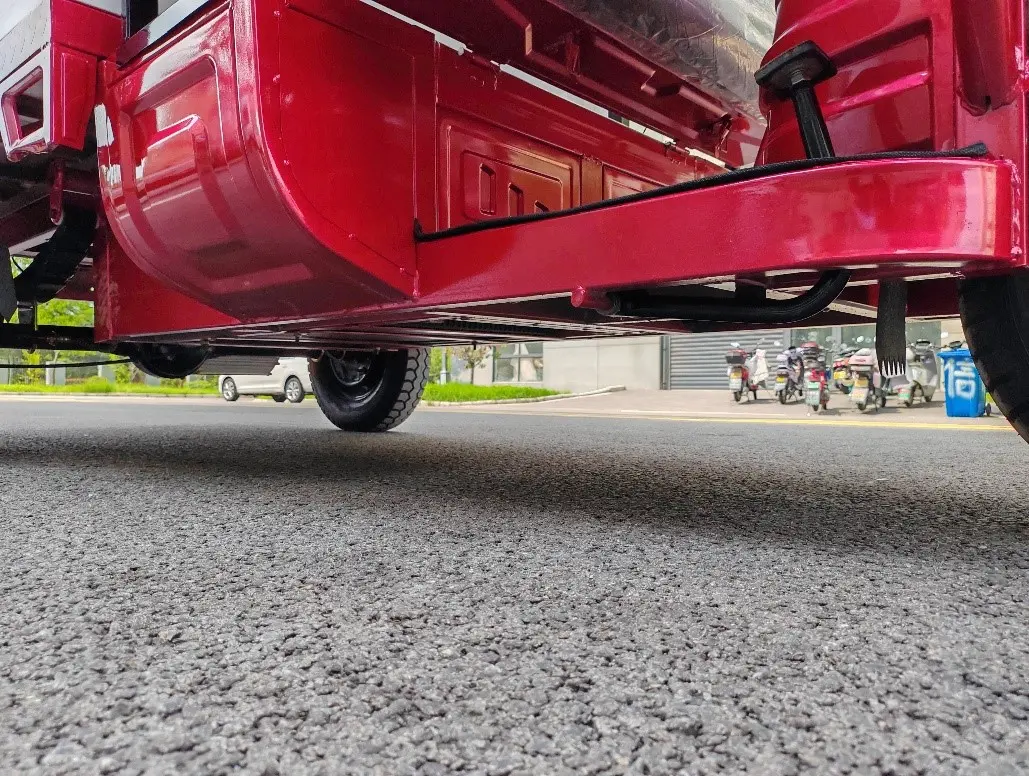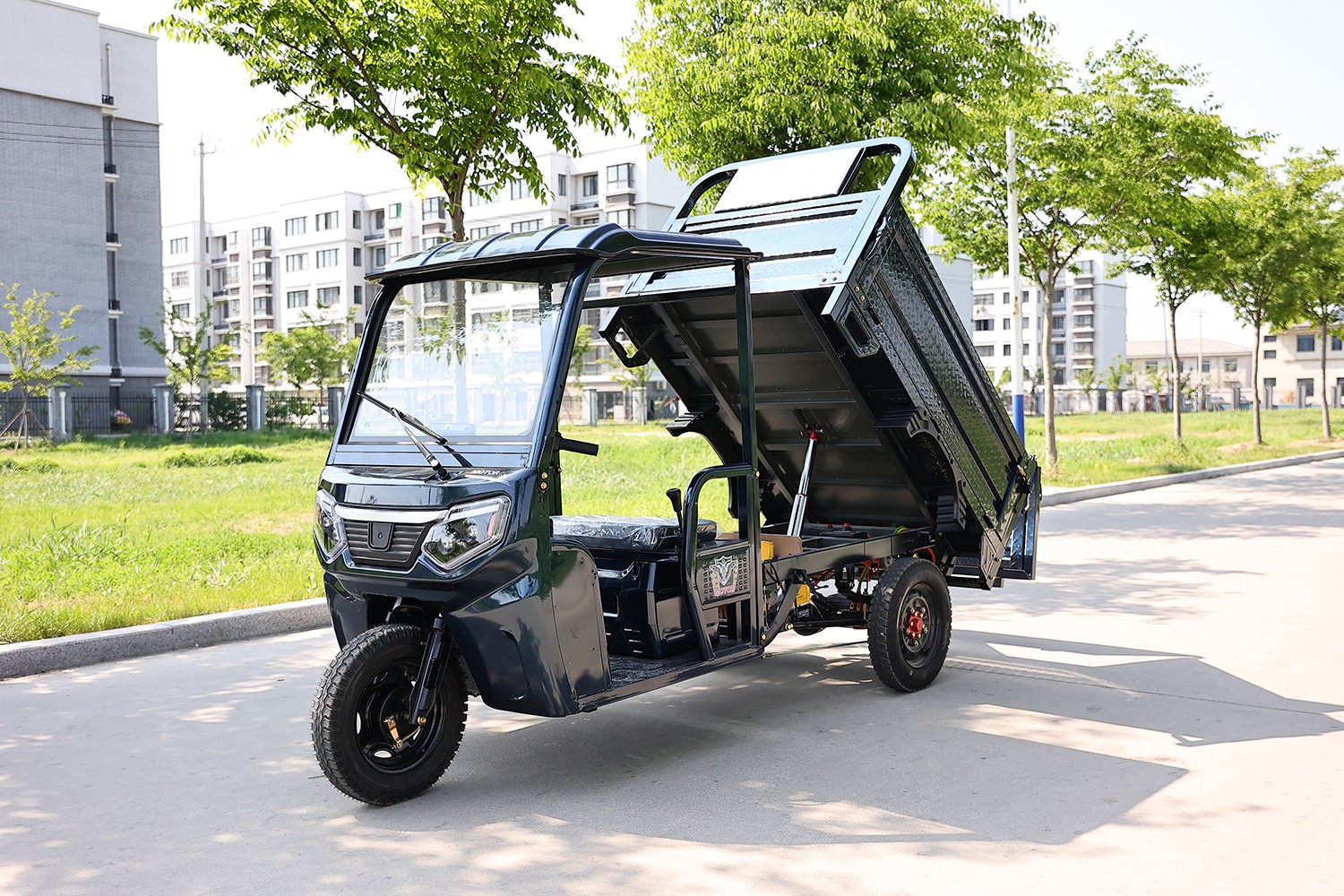Are you searching for a smart, efficient, and environmentally friendly way to boost your business’s logistics or passenger transport? This article dives deep into the world of cargo bikes, specifically focusing on tricycles and why they might be the perfect solution for your needs. We’ll explore the different types of cargo trike available, their benefits, and how they can transform your operations. Keep reading to discover how a cargo bike could be your next best investment.
1. What Exactly is a Cargo Bike, and Why Choose a Tricycle Design?
A cargo bike, at its heart, is simply a cycle designed to carry more than just a rider. Unlike a regular bike intended for personal transport or recreation, a cargo bike is built with a reinforced frame and often features additional components to facilitate transport of goods or even people. Think of them as the workhorses of the cycle world!
But why consider a tricycle – a three-wheeled cargo bike – over a two-wheeled version? The answer lies in stability and load capacity. Tricycles offer inherent stability, especially when stationary or moving at low speeds. This is a significant advantage when dealing with heavy loads or when transporting people. Imagine trying to load bulky packages onto a two-wheeler – it can be tricky to balance! A trike, with its three wheels, eliminates this balancing act, making loading and unloading much safer and easier. For businesses focused on efficient and safe delivery or passenger transport, this stability is invaluable.
2. Two Wheels or Three? Understanding Different Types of Cargo Bikes: From Regular Bikes to Trikes.
When you enter the world of cargo bikes, you’ll quickly realize it’s not a one-size-fits-all category. Just like cars, there are different types of cargo bikes designed for different purposes. The most fundamental distinction is between two-wheeled and three-wheeled models.
Two-wheelers, often resembling regular bikes but with extended frames and cargo areas, include popular styles like longtails and bakfiets (also known as box-bikes). Longtails have an elongated rear frame behind the rider, perfect for carrying passengers or longer cargo. Bakfiets or box-bikes, on the other hand, feature a box at the front of the bike loaded, positioned in front of the bike, between the rider and the front wheel. This type of cargo bike is fantastic for carrying children or larger volumes of goods, keeping the cargo visible and easily accessible. While two-wheelers can be surprisingly agile, especially electric-assist cargo bikes, they do require a bit more balance and steering skill, especially when heavily loaded.

Electric Cargo Tricycle
Three-wheelers, or tricycles, offer a different set of advantages. As mentioned, their primary benefit is stability. This makes them easier to ride at slow speeds and when stationary, particularly when carrying heavy items. Cargo tricycles come in various configurations. Some have the cargo area at the front, similar to a bakfiets, while others have it at the back instead. Three-wheelers are especially popular for applications where stability and ease of loading are paramount, such as street vending, deliveries in pedestrian zones, and passenger transport services like pedicabs and rickshaws.
3. What Type of Cargo Can a Cargo Tricycle Really Handle? Exploring Versatility.
The versatility of a cargo tricycle is truly impressive. They are designed to handle a wide type of cargo, making them adaptable to numerous business needs. From small packages to transporting people, a cargo trike can be configured to suit your specific requirements.
For delivery services, electric cargo tricycles can be equipped with large cargo boxes, perfect for parcels, food deliveries, or even groceries. The stable platform makes it easy to secure and transport items safely, reducing the risk of damage during transit. Consider last-mile delivery companies in urban areas – a fleet of electric cargo tricycles can navigate congested streets and pedestrian zones much more efficiently than vans or trucks, offering an environmentally friendly and cost-effective solution.
Beyond goods, cargo tricycles are also excellent for transporting people. Passenger tricycles, like pedicabs or rickshaws, are commonly used in tourist areas or for short-distance urban transport. These three-wheelers can be designed with comfortable seating and even rain tents to protect passengers from the elements. Tourism operators, ride-sharing companies in specific regions, and even transportation companies looking for niche services can benefit from passenger tricycles.

Electric cargo tricycle
The type of cargo a cargo tricycle can handle also extends to more specialized applications. Imagine a mobile coffee vendor using a cargo trike equipped with a coffee machine and supplies, easily moving between locations to serve customers. Or picture government agencies using cargo tricycles for park maintenance or waste collection in pedestrian areas. The possibilities are vast, showcasing the remarkable versatility of these three-wheeled machines.
4. Why are Electric-Assist Cargo Bikes Becoming the Go-To Choice for Businesses?
While traditional pedal-powered cargo bikes have their place, electric-assist cargo bikes are rapidly becoming the preferred choice for businesses. The reason is simple: e-bikes make hard work easier and extend the range and capabilities of cargo bikes significantly.
An electric motor integrated into the cycle provides pedal-assist, meaning the motor kicks in when the rider pedals, offering extra power and reducing exertion. This is particularly crucial when carrying heavy loads or tackling inclines. Think about a delivery rider making multiple stops throughout the day, often carrying bulky loads. Without electric assist, fatigue would quickly set in, reducing efficiency and potentially leading to safety concerns. Electric-assist cargo bikes mitigate this fatigue, allowing riders to cover longer distances, make more deliveries, and maintain consistent performance throughout their shift.
Furthermore, e-bikes expand the operational range of cargo bikes. Businesses can serve a wider geographical area and handle routes with more hills or challenging terrain. This opens up new possibilities for companies looking to expand their delivery zones or offer services in areas previously considered too difficult for cycle-based transport.
The environmentally friendly aspect of electric cargo bikes is another major draw. As businesses increasingly focus on sustainability, e-bikes offer a zero-emission alternative to cars and vans for urban logistics. This not only reduces their carbon footprint but also enhances their public image and appeal to environmentally conscious customers. For businesses aiming to be both efficient and responsible, electric-assist cargo bikes are a winning combination.
5. Steering Your Way to Success: How Do Different Cargo Bike Steering Mechanisms Affect Handling?
The way a cargo bike steers can significantly impact its handling and rider experience. Unlike a regular bike where you steer by leaning and turning the handlebar directly connected to the front wheel, cargo bikes, especially tricycles and some two-wheelers, often employ different steering mechanisms.
One common type is linkage steering, often found in bakfiets-style cargo bikes with a box at the front. In this system, the handlebar is connected to the front wheels (in the case of tricycles) or the front cargo box (in some two-wheelers) via a series of rods and joints. This allows for a more stable and predictable steering experience, especially when carrying heavy loads. While it might feel slightly different from a normal bike initially, many users find linkage steering comfortable and efficient, particularly for navigating city streets and tight corners.
Another steering type is direct steering, more common in longtail cargo bikes and some three-wheelers with the cargo area behind the rider. Here, the handlebar is directly connected to the front wheel, similar to a classic bicycle. This provides a more familiar steering feel for those accustomed to traditional bicycles. Direct steering can offer a more responsive and agile ride, which some riders prefer, especially in less congested environments.

Electric passenger tricycle
Understanding the different steering mechanisms is crucial when choosing a cargo bike. The best option depends on your intended use, the type of cargo you’ll be carrying, and your personal riding preferences. It’s always recommended to test ride different models to experience the steering firsthand and determine which feels most comfortable and suitable for your needs.
6. Passenger or Payload? Which Type of Cargo Tricycle Best Suits Transporting People or Goods?
Choosing the right cargo tricycle also depends on whether you primarily need to transport passengers or payload. While some models can be adapted for both, there are specialized designs that excel in each area.
For transporting people, passenger tricycles are specifically designed for comfort and safety. These three-wheelers often feature bench seats, sometimes with seatbelts or grab handles, and may include features like canopies or rain tents to protect passengers from the weather. Pedicabs, rickshaws, and similar trikes fall into this category. They prioritize passenger space and comfort, often with a focus on smooth ride quality and easy access for passengers to get on and off. These are ideal for ride-sharing companies, tourist transport, or providing shuttle services in specific areas.
For carrying goods, electric cargo tricycles are built for durability and load capacity. These models typically feature robust frames, sturdy cargo boxes or platforms, and may offer various configurations for securing different types of cargo. Cargo trikes designed for payload often prioritize cargo volume and accessibility, with features like drop-down sides, tilting cargo beds (like auto-unloading models), or modular cargo systems. Last-mile delivery companies, logistics providers, and small businesses focused on goods transport will find these cargo tricycles to be invaluable tools.
It’s important to consider your primary use case when selecting a cargo tricycle. While a passenger trike could technically carry some goods, it might not be as efficient or durable for heavy delivery work. Conversely, a heavy-duty cargo trike designed for payload might not offer the same level of passenger comfort as a dedicated passenger model. Carefully assess your needs to choose the type of cargo tricycle that best aligns with your transport requirements.
7. Are Cargo Trikes Only for Flat Terrain? Tackling Incline and Heavy Loads.
One common misconception about cargo trikes is that they are only suitable for flat terrain. While it’s true that hills can pose a challenge, especially with heavy loads, modern electric-assist cargo bikes are more than capable of tackling inclines and varying terrains.
The key is the electric motor. As discussed earlier, e-bikes provide pedal-assist, which significantly reduces the effort required to pedal, especially uphill. With the right level of electric assist, a rider can confidently climb hills even when the cargo bike is fully bike loaded with a substantial payload. Many electric cargo tricycles are equipped with powerful motors and multiple assist levels, allowing riders to adjust the level of support based on the terrain and load.
Furthermore, the gearing system on a cargo trike plays a crucial role in tackling inclines. Modern cargo bikes often feature wide-range gearing, providing lower gears that make pedaling easier uphill. Combined with electric assist, these gear systems enable riders to conquer surprisingly steep hills without excessive strain.

Van-type logistics electric tricycle HPX10
While extremely steep or prolonged inclines might still be challenging, for most urban and suburban environments, electric-assist cargo bikes are perfectly capable of handling hills. The stability of three wheels can even be an advantage on uphill starts compared to two-wheelers, preventing the bike from tipping over when starting from a standstill on a slope. Don’t let hilly terrain deter you from considering cargo tricycles – with electric assist and proper gearing, they are surprisingly versatile even in undulating landscapes.
8. What Key Features Should You Look for in a High-Quality Cargo Tricycle for Business Use?
When investing in cargo tricycles for your business, quality and reliability are paramount. You need bikes that are durable, dependable, and built to withstand the rigors of daily commercial use. Here are some key features to look for in a high-quality cargo tricycle:
- Robust Frame: The frame is the backbone of the cycle. Look for frames made from high-strength steel or aluminum alloy, designed to handle heavy loads and frequent use. A well-built frame ensures longevity and stability.
- Powerful Motor and Reliable Battery: For electric-assist cargo bikes, the motor and battery are crucial. Choose a reputable motor brand with sufficient power for your typical loads and terrain. Opt for batteries with a good capacity for adequate range and lifespan. Consider different battery options to match your operational needs.
- Durable Components: Pay attention to components like brakes, gears, wheels, and tires. Hydraulic disc brakes offer superior stopping power, especially when bike loaded. Reliable gear systems ensure smooth shifting and efficient pedaling. Sturdy wheels and puncture-resistant tires are essential for minimizing downtime.
- Comfortable and Ergonomic Design: Rider comfort is important, especially for long working hours. Look for adjustable seats and handlebars, ergonomic grips, and a comfortable riding position. Consider features like suspension systems for a smoother ride, particularly on uneven surfaces.
- Compliance with Safety Standards: Ensure the cargo tricycles comply with relevant safety standards and regulations in your region. This is crucial for legal compliance and rider safety. Check for certifications and safety features like lights, reflectors, and reliable braking systems.
- Customizable Features: Depending on your business needs and order volume, customizable features can be beneficial. Some manufacturers offer options for cargo box customization, branding, or specific component upgrades.
By focusing on these key features, you can ensure you invest in cargo tricycles that are not only efficient and versatile but also reliable and long-lasting, providing a solid return on investment for your business.
9. Finding the Right Supplier: Why Source Your Cargo Bikes from a Specialised Factory in China?
Sourcing your cargo bikes from a specialized factory, particularly in China, can offer significant advantages. China has become a global hub for electric vehicle manufacturing, with numerous factories specializing in electric tricycles.
One of the primary benefits is cost-effectiveness. Factories in China often offer competitive pricing due to efficient manufacturing processes and economies of scale. This can be particularly attractive for businesses looking to build a fleet of cargo bikes without breaking the bank. You can purchase cost-effective electric tricycles directly from the source.
Specialized factories also offer expertise and customization options. A factory specializing in the manufacturing of electric tricycles has deep knowledge of tricycle design, engineering, and production. They can provide valuable insights and support in choosing the right models and specifications for your needs. Furthermore, many factories offer customizable features, allowing you to tailor the cargo bikes to your specific branding or operational requirements, especially for larger orders.
When sourcing from China, it’s crucial to find a reputable and reliable supplier. Look for factories with multiple production lines, a proven track record of exports to your target markets (USA, North America, Europe, Australia), and a commitment to high-quality components. Consider attending exhibitions to meet suppliers in person and assess their capabilities. Google search can also be a starting point to identify potential suppliers, but thorough due diligence is essential to ensure you partner with a trustworthy manufacturer.
10. Making the Switch: How Can a Cargo Bike Fleet Improve Your Business Operations and Bottom Line?
Integrating a cargo bike fleet into your business operations can lead to significant improvements in efficiency, cost savings, and overall business performance. The benefits extend across various aspects of your operations and directly impact your bottom line.
Firstly, cargo bikes offer significant cost savings compared to traditional vehicles. Electric tricycles have lower running costs due to cheaper electricity compared to fuel, reduced maintenance needs, and lower insurance and registration fees in many regions. For last-mile delivery companies or businesses with frequent short-distance transport needs, these cost savings can quickly add up.
Secondly, cargo bikes enhance operational efficiency, particularly in urban environments. They can navigate congested streets and pedestrian zones more easily than cars or vans, reducing delivery times and improving on-time performance. Their maneuverability and smaller footprint also simplify parking and access to loading/unloading areas.

Auto-unloading electric cargo carrier tricycle HPZ20
Environmentally, cargo bikes contribute to a greener business image and help meet sustainability goals. Electric tricycles produce zero emissions, reducing your carbon footprint and appealing to environmentally conscious customers. This can be a significant marketing advantage and enhance your brand reputation.
Finally, cargo bikes can improve employee well-being. Riding an e-bike provides physical activity, which can boost employee morale and health compared to sedentary driving jobs. This can lead to increased job satisfaction and reduced employee turnover.
By making the switch to a cargo bike fleet, businesses can achieve a triple win: reducing costs, improving efficiency, and enhancing their environmental and social responsibility. It’s a smart and sustainable move that can drive both operational improvements and a healthier bottom line.
Key Takeaways:
- Cargo tricycles offer superior stability and load capacity compared to two-wheeled cargo bikes, making them ideal for heavy loads and passenger transport.
- Electric-assist significantly enhances the capabilities of cargo bikes, making them suitable for hills and longer distances, and reducing rider fatigue.
- Different types of cargo tricycles cater to various needs, from passenger transport (pedicabs) to goods delivery (electric cargo models).
- When choosing a cargo tricycle, prioritize a robust frame, reliable motor and battery, durable components, and compliance with safety standards.
- Sourcing from a specialized factory in China can offer cost-effectiveness, customization options, and expertise in electric tricycle manufacturing.
- Integrating a cargo bike fleet can improve business efficiency, reduce costs, enhance your environmental image, and boost employee well-being.
Consider exploring the potential of cargo tricycles for your business today. They might just be the innovative and sustainable solution you’ve been looking for!
Internal Links:
- Explore our range of electric passenger tricycles like the EV5 Electric passenger tricycle for comfortable and efficient passenger transport.
- For heavy-duty deliveries, consider our Electric cargo tricycle HJ20, designed for bulky loads and reliable performance.
- Discover the versatility of our Van-type logistics electric tricycle HPX10 for streamlined urban logistics.
- Learn more about our Electric passenger tricycle (African Eagle K05), a robust option for passenger services.
- For auto-unloading solutions, check out our Auto-unloading electric cargo carrier tricycle HPZ20 to simplify cargo handling.
Post time: 02-06-2025




